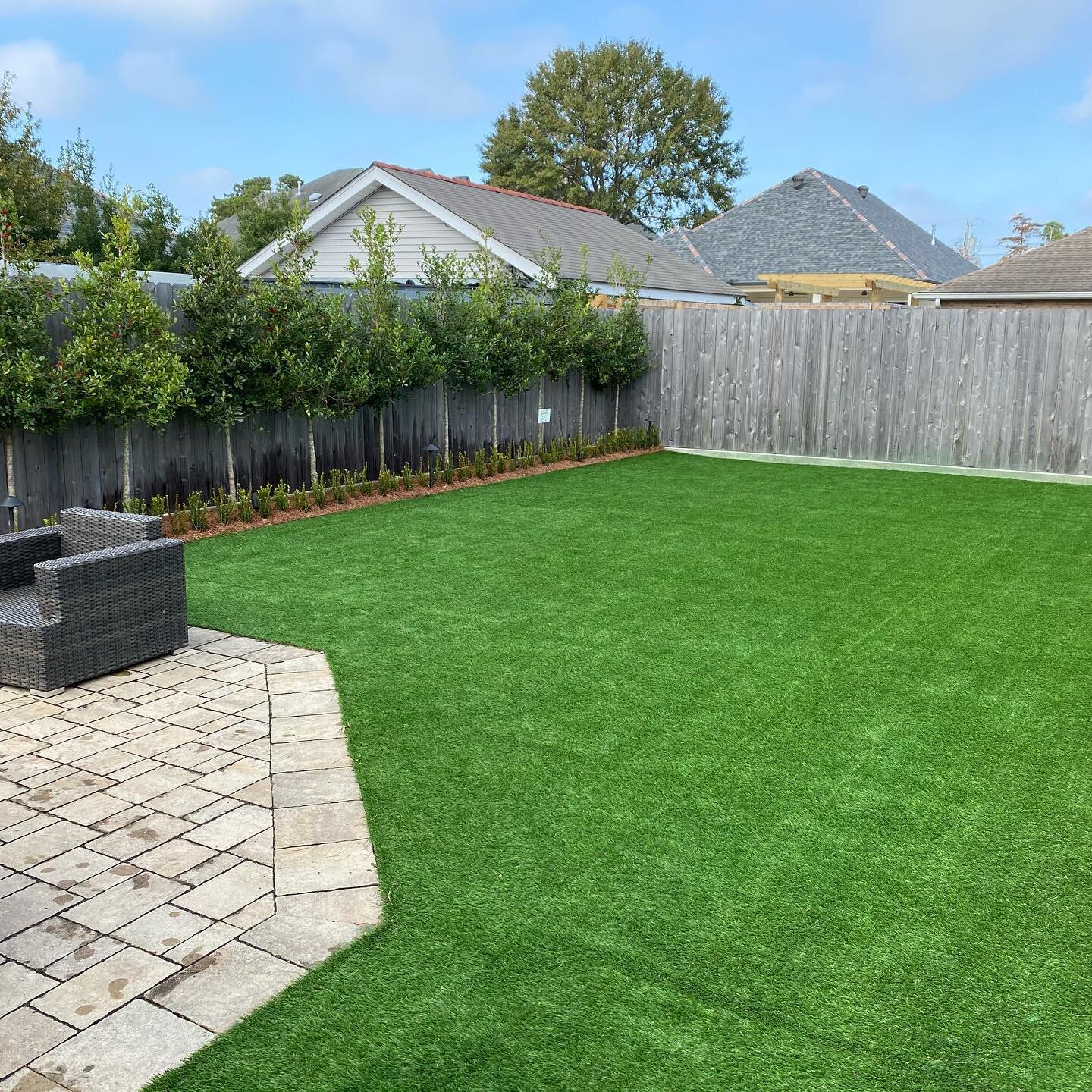Look Into the Environmental Advantages of Opting for Artificial Turf Solutions
The fostering of synthetic grass options offers an engaging possibility to address pushing ecological difficulties. By significantly minimizing water use and lessening the application of unsafe chemicals, these options not just promote sustainable landscaping yet additionally secure local ecosystems.
Water Conservation Benefits
Among the most significant benefits of man-made grass is its ability to save water. Traditional grass lawns need significant irrigation, particularly in locations vulnerable to drought or water constraints. In contrast, man-made grass does not require watering, substantially decreasing the overall demand for water resources. This attribute is specifically helpful in deserts where water deficiency is a pressing concern.
By getting rid of the requirement for regular watering, synthetic grass adds to lasting landscape methods and assists alleviate the environmental influence of excessive water consumption. Additionally, the preservation of water extends to the decrease of runoff, which can lead to dirt disintegration and waterway contamination.
Furthermore, the installation of synthetic turf enables home owners and municipalities to assign water sources more efficiently, concentrating on necessary usages such as alcohol consumption water and farming. The change in the direction of man-made lawn not just promotes liable water use yet additionally lines up with wider ecological goals focused on maintaining all-natural sources.
As communities significantly focus on sustainability, the water preservation advantages of synthetic grass present a compelling case for its adoption in property and business landscape design tasks.
Reduced Chemical Usage
The shift to synthetic grass substantially decreases the reliance on chemical therapies frequently utilized in natural turf maintenance. Standard grass management commonly entails the application of chemicals, fertilizers, and herbicides to advertise growth and control parasites. These chemicals can present risks to human health and wellness, regional wild animals, and the setting, adding to soil and water contamination.
In contrast, artificial lawn eliminates the requirement for these unsafe substances. By decreasing the release of synthetic compounds right into the community, artificial turf advertises healthier soil and water systems.
Additionally, the absence of chemical drainage connected with synthetic grass installations assists safeguard regional rivers from contamination, sustaining water life and keeping biodiversity. Phoenix turf companies. As communities progressively prioritize lasting methods, choosing artificial turf provides a sensible option that lines up with environmental conservation objectives. Via this change, home proprietors can delight in rich green areas without compromising eco-friendly health and wellness, leading the method for a more sustainable future
Lower Carbon Impact

In addition, the installation of synthetic lawn can lead to more helpful hints considerable water preservation. Natural lawns require considerable quantities of water for irrigation, which not only includes in the carbon footprint connected with water removal and therapy yet likewise strains local water resources. In comparison, synthetic grass needs very little maintenance, calling for no watering, thus dramatically reducing water usage and its connected power prices.
Additionally, the long life of synthetic grass contributes to its reduced carbon effect. With a life-span of up to 15 years or more, the need for constant replacements is reduced, leading to less waste and lower energy intake in manufacturing and disposing of standard turf choices. Overall, synthetic grass offers a sustainable choice for eco conscious landscaping.
Environment Preservation
Habitat preservation is an important consideration in the discussion over landscape design options, especially when contrasting fabricated lawn to all-natural yard. All-natural grass lawns often require substantial maintenance, including making use of chemicals, fertilizers, and herbicides, which can detrimentally influence neighborhood ecological communities. These chemicals can leach into the soil and rivers, hurting indigenous plants and fauna and disrupting neighborhood environments.
Fabricated lawn removes the need for damaging chemicals, consequently safeguarding nearby wildlife and maintaining the integrity of surrounding communities. The installation of man-made turf can lead to the conversion of previous lawn locations right into even more biodiverse landscapes, such as pollinator yards or indigenous plant areas, which can sustain neighborhood wildlife.
Eventually, the shift to fabricated grass not only saves water and reduces maintenance initiatives yet also promotes a more unified connection between human activities and the native environment, advertising habitat conservation in the process.
Long-Term Sustainability
Long-term sustainability is a crucial consider reviewing the benefits of synthetic lawn over typical grass yards. Among the most considerable benefits of artificial turf is its toughness; it can last up to 15-20 years with minimal upkeep, whereas natural turf needs frequent reseeding and substitute. This durability minimizes the need for constant sources, such as water, fertilizers, and pesticides, which are important for keeping a healthy and balanced turf yard.
Furthermore, artificial turf adds to a decrease in carbon exhausts linked with lawn treatment devices. Traditional grass usually need gas-powered lawn mowers, leaners, and blowers, every one of which add to air pollution. Phoenix turf companies. On the other hand, synthetic grass removes the demand for such tools, advertising a cleaner environment
In addition, the production of man-made lawn significantly uses recycled materials, boosting its sustainability profile. As suppliers embrace company website eco-friendly methods, the ecological impact of synthetic lawn continues to decrease.

Final Thought
The adoption of synthetic grass services provides significant ecological benefits, consisting of considerable water conservation, reduced reliance on harmful chemicals, and a lower carbon footprint. Fabricated lawn help in preserving natural habitats by minimizing land disturbance and promoting long-lasting sustainability through the use of sturdy products. Jointly, these factors highlight the capacity of man-made turf to contribute positively to ecological wellness and supply a practical option to conventional landscape design practices in a significantly resource-conscious world.
In comparison, synthetic lawn does not require watering, dramatically lowering the total need for water sources. By minimizing the release of synthetic compounds into the ecosystem, synthetic turf advertises much healthier soil and water systems.
Furthermore, the installation of man-made turf can result in substantial water conservation. In comparison, fabricated grass requires very little upkeep, needing no watering, thus dramatically reducing water use and its linked power expenses.
